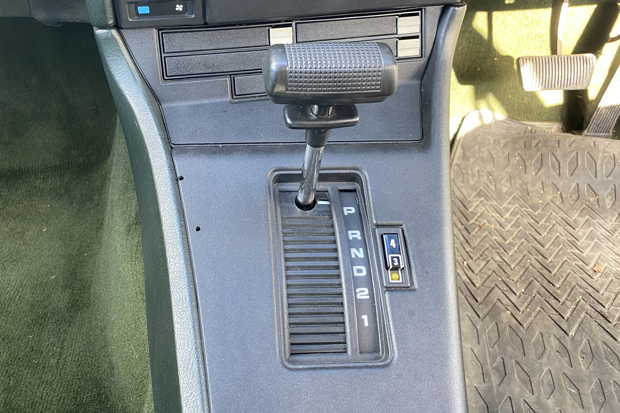Question of the week: Why are the positions in an automatic gearbox arranged P-R-N-D?

Dear Honest John,
"Do you have a rational explanation why to select Reverse in an automatic gearbox, the shifter must be moved toward the front of the car and to select Drive the shifter must be moved to the rear of the car?
This is completely the reverse of how my brain dictates it ought to be i.e. Drive should be forward and Reverse should be backwards.
I'm guessing it has something to do with Americans and I do realise that not every manufacturer does this, but I cannot get my head around the rationale that dictated it."
- PF
Dear PF,
As with many conventions of how cars are laid out and operate, the P-R-N-D layout of automatic transmissions has evolved from a mixture of experimentation, legislation and eventual hegemony.
Many of the earliest automatic cars from influential US manufacturers used the P-N-D-L-R layout, with Drive, Low and Reverse grouped together and R in the rearmost position as you suggest.
However, numerous incidents and accidents attributed to drivers accidentally shifting between L and R positions eventually resulted in the P-R-N-D layout becoming a Federal Law in 1971, after Ralph Nader's famous book Unsafe At Any Speed highlighted the issue.
The law mandated that the Neutral position should be between Reverse and Drive to reduce the likelihood of accidentally shifting between the two. Many US manufacturers had already changed to the P-R-N-D layout by 1966 even before the layout became law.
It is also worth considering that many US vehicles originally used column shifters, where the transmission lever was essentially a long column stalk.
With the vehicle in Park the column shifter would be in its uppermost position, making it easy for the driver to enter or exit the vehicle and making it clear from outside the vehicle that it was safely in Park. Putting the Drive position in a lower position also meant that the driver could shift from Park to Drive without having to visually check the gearlever position for convenience.
This layout has essentially been transferred from the column shift to the centrally-mounted gearlever, and while manufacturers selling vehicles outside the US could theoretically change the gear position arrangement, it would go against the experience of virtually every driver on the road.
In 2016 Star Trek actor Anton Yelchin was tragically crushed by his Jeep Grand Cherokee after he mistakenly believed the gearlever was in the Park position due to a monostable gearlever design that would return to a central position rather than remaining in the selected position.
This resulted in a recall of 1.1 million vehicles by Fiat Chrysler, with 41 injuries and 212 crashes attributed to the problem.
It is also worth bearing in mind that when shifting from the Park position the gearlever is moved rearwards into Reverse.
How can a passenger stop an automatic car in an emergency?


